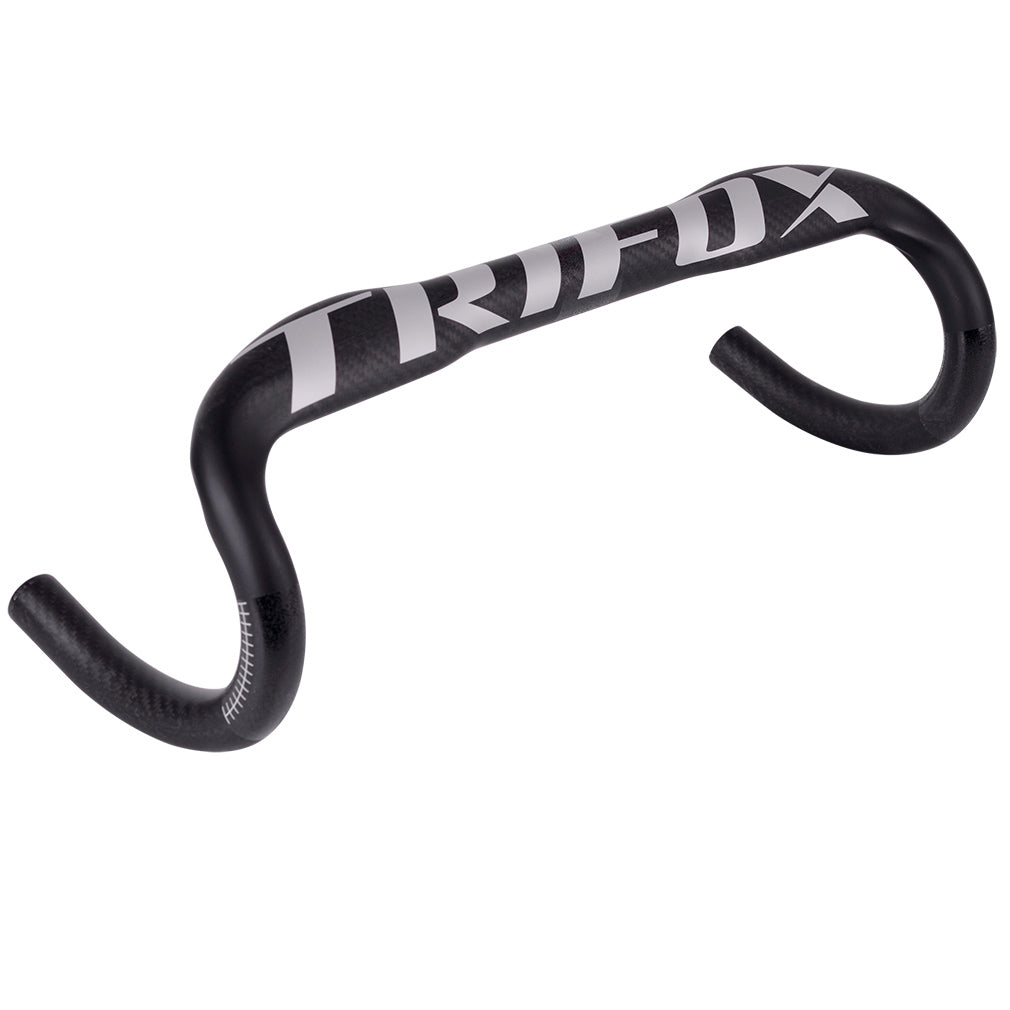

What I did quickly come to appreciate, however, is how the subtle shaping is so well suited to my hands. There’s a bit of flex, sure, but it doesn’t strike me as dramatically different from most other carbon drop bars I’ve used over the years (and I ultimately installed my trusty Redshift Sports ShockStop suspension stem to bring back my usual levels of squishiness). The compact reach and shallow drop feel just about right for the intended usage. In terms of comfort, I did find the Spano to be very agreeable, but not for the reasons Whisky claims. I’d caution against clocking your levers too far upward, though, as it can make for an awkward reach to the brakes.

Whereas I prefer a big change in body position when I transition between the hoods and the drops on road bikes, this setup retains a more neutral posture throughout for more control without shifting the weight bias too far forward. Kudos to Whisky for the segment-appropriate drop and reach figures, too, as well as the tight bend right where the levers mount. To me, the more typical flared bars gain versatility in the drops at the expense of comfort on the hoods, but that’s not the case here. The mild outward cant of the lever blades produced by this design still feels pretty natural to me while on the hoods, and the difference between the upper and lower flare angles isn’t so extreme that the brake lever blades end up in a weird position when you’re down in the drops. By limiting the flare up top to a modest 12°, the levers end up at a more natural-feeling angle for your hands.įor one, I think Whisky, 3T, and any other bar brands out there that are using this sort of compound flare design have got the right idea.

To that end, the Spano strikes me as a solid compromise, and it honestly surprised me a bit.

I’ve never liked the weird lever angle, and haven’t always gotten along with the concept that the extra leverage afforded by the additional bar width also requires you to get lower - which is the opposite of what I usually want if and when things get hairy. I should make it clear right from the get-go that I haven’t historically been a fan of many flared bars for gravel. On the trail with the Spanoįirst things first: handlebars are nearly as personal an item as saddles or shoes, so take my comments here with a grain of salt. Availability is limited to North America for now given the limited initial production quantities, but Whisky is hoping that changes in the near future. The ends are also drilled for internal Shimano Di2 wire routing, and it’s offered in five widths: 40, 42, 44, 46, and 48 cm (measured center-to-center at the hoods), all with a 31.8 mm stem clamp diameter.Īctual weight for my 44 cm sample is 239 g, and retail price is US$280 - not as low as I would have liked to see from a brand like Whisky, but at least competitive with other options. The tops are flattened “to promote flex and cutdown on feedback from rougher surfaces”, and the compact 68 mm reach and 100 mm drop are about what you’d expect. The compound flare offers the width and control that many gravel riders want, but without the goofy lever angle that comes with many flared bars. This still provides riders with the additional width down below where it’s most useful (6 cm more width at the end of the drops as compared to the where the levers mount, measured center-to-center), but without forcing your wrists into a weird position or creating a goofy reach to the brake levers when you’re on the hoods. More specifically, the upper section of the drops is flared at a modest 12° so as not to mess too much with the hood angle, while the lower section sits at a more pronounced 20°. Whisky Parts Co’s new carbon fiber Spano follows in the footsteps of 3T’s Superghiaia and a few others by incorporating a so-called “progressive” flare. Yet despite the explosion of the category, most models ignore the fact that brake lever bodies are designed to be positioned nominally vertical. There’s certainly no shortage of “gravel-specific” handlebars on the market these days, nearly all with variations on a common theme: wider available widths, short reach, shallow drop, and some degree of flare.


 0 kommentar(er)
0 kommentar(er)
